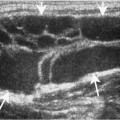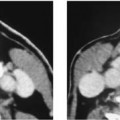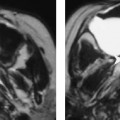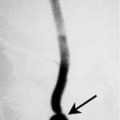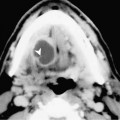Chapter 61 The cheek is formed by the buccinator muscle, overlying fibroadipose tissue, and skin, and constitutes the lateral margin of the oral cavity. The mucosal surfaces of the cheek extend laterally and are continuous with the mucosa of the mandibular and maxillary alveolar ridges. This occurs laterally at a commissure known as the gingivobuccal sulcus. The parotid duct empties into the buccal mucosa at the level of the second molar. Buccal carcinoma is primarily associated with snuff dipping and chewing tobacco. As a result, these tumors have unique geographic and demographic characteristics. These tumors present later in life than other oral carcinomas, with the average age of presentation between 60 and 70 years. Overall, the incidence in men is greater than in women (4–10:1). However in the southeastern United States, the buccal carcinomas are more common in elderly women than in men (3:1). This may be due to a relative’s high incidence of the use of non-chewing tobacco in women. Stages of oral cavity carcinoma are presented in Table 61–1. Early tumors are often asymptomatic and may be discovered by a dentist at a routine checkup. These tumors typically occur on a background of leukoplakia. Small tumors may present as a mass. Large lesions may present as a painful bleeding mass. Advanced tumors may erode the underlying bone and/or extend posteriorly to the masticator space causing trismus (Fig. 61–1). The primary echelon lymphatic drainage is to the Group I lymph nodes. The primary drainage is usually ipsilateral to the side to the primary tumor. Contralateral involvement is unusual. The incidence of positive lymph nodes at initial presentation varies between 10 and 30%.
Squamous Cell Carcinoma of the Buccal Mucosa
Epidemiology
Clinical Findings
TX | Primary tumor cannot be assessed |
T0 | No evidence of primary tumor |
Tis | Carcinoma in situ |
T1 | Tumor < 2 cm in greatest dimension |
